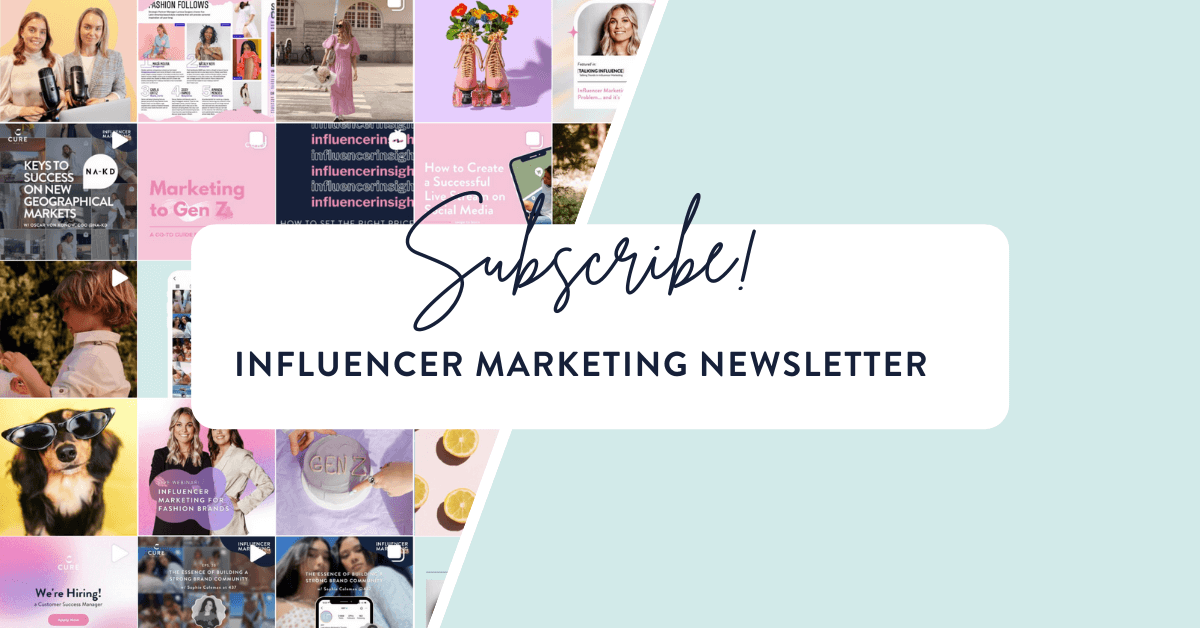The influencer marketing scene has changed a lot since it began over a decade ago, and new tactics and ways of working are continually in flux.
One tactic that has gained traction recently is influencer paid social. In this blog post, we will unpack what this term means, the evolution of this tactic, and how brands can use it to make their influencer marketing activities even more effective.
What is influencer paid social?
Today’s consumers prefer peer-to-peer marketing over brand-to-peer. In other words, they want to hear about products from people they trust rather than brands themselves. To take their marketing to the next level, brands should apply this insight to all channels, including paid social.
Traditionally, paid social ads feature brand-produced content. Influencer paid social, on the other hand, features existing influencer content that is boosted to a wider audience on social media. This audience is a larger group of people than the brand’s and the influencer’s followers alone.
The potential impact of influencer paid social is best illustrated through an example. Imagine an influencer does an organic post for H&M. This post generates 1,000 clicks to a landing page. H&M could then create a Facebook audience based on those landing page visits to push similar influencer paid social content to them. This audience is much more likely to interact with H&M if they are exposed to them through an influencer they like rather than if H&M were to target them directly.
A second example of using influencer paid social to better reach a target audience can be demonstrated through the beauty brand Makeup Mekka. The marketing team at Makeup Mekka could ask an influencer they are working with to share her audience list with them. Makeup Mekka could then create a custom audience based on this list to push similar influencer paid social content to. The more influencers Makeup Mekka employs for this tactic, the more likely they are to reach and convert their target audience.
Prefer to listen? Tune in to this article as a podcast episode.
The evolution of influencer paid social
It’s no secret that the social media marketing landscape is crowded. While brands may have been able to differentiate themselves using influencer marketing and paid social a few years ago, these days are long gone. The crowdedness of the social media space has pushed brands to get more creative with their marketing tactics. A great example of this is influencer paid social ads.
On its own, paid advertising on social media is known for its effective targeting abilities. Brands can customise extensive audience lists to ensure the right people are seeing their paid content. However, no matter how targeted these advertisements are, the reality is that today’s consumers do not want to interact with brand-generated content. Digital natives like Gen Z and Millennials are turned off by the lack of authenticity and generally dislike being marketed to against their will.
Influencer marketing, on the other hand, is lauded for its authenticity and the strong relationships it leverages. Influencers are essentially word-of-mouth at scale. Their followers look to them for recommendations because they have proven themselves to be tastemakers in their respective niches. When brands work with influencers, they get to borrow their reputation and followers’ trust.
One of the downsides of influencer marketing on its own is that its reach is limited to the size of the influencers’ following. This is where combining influencer marketing and paid social pays off. By boosting influencers’ posts via paid social, brands are able to reach even larger relevant audiences with content they are more likely to engage with. In essence, influencer paid social is the best of both worlds for social media marketing.
View this post on Instagram
What are the benefits of adding paid social to your influencer strategy?
The primary benefit of using influencer content for paid social is authenticity. As we mentioned above, today’s consumers are sceptical of brands. In fact, according to our own influencer marketing research of 1,000+ millennials, 48% of consumers see traditional marketing as less authentic than influencer marketing. Furthermore, 49% believe an influencer recommendation is more trustworthy than a brand recommendation. Brands who take these insights into account have a better chance of connecting with their target audiences and consequently, generating a higher return on their marketing efforts.
Paid influencer social is a very cost-efficient way to increase your total reach while lowering the CPM (cost-per-mille). At first glance, influencer marketing is expensive because production costs are included in the price. However, if you extend the longevity of influencer content by paying for content rights, and subsequently repurposing the content as paid aids, the channel becomes significantly less expensive. This approach is much more time and cost-effective than creating paid social content from scratch in-house.
Overall, influencer paid social is a great way to increase the frequency at which you reach a target group. Practice makes perfect in this case, and the more custom audiences you play around with using ads managers, the more effective your marketing will become.
In conclusion…
The most common goal of influencer paid social is increasing your brand’s reach and moving consumers from brand awareness to preference. This tactic complements both regular paid social and influencer marketing. Because social media platforms’ algorithms are increasingly more difficult to master, using organic influencer posts alone poses the risk of getting hidden by the algorithm, and consequently, not reaching a large audience. But, when you add paid reach on top of that, you ensure that your campaign is visible to as many people as possible.
However, just because influencer paid social performs well, that does not mean you should replace paid social entirely. It’s important to find the right marketing mix for your brand and integrate these tactics as you see fit.
Check out our blog or newsletter for more inspiration on how you can approach influencer marketing.



